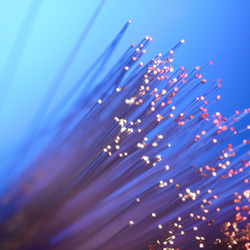Nanostructured materials shrink laser dimensions
The strong interest in self-assembled semiconductor quantum dots has been motivated by the possibility of exploiting their superior electrical and optical properties when compared with conventional quantum well structures. Droplets of approximately 10nm diameter are formed naturally by the effect of strain-relaxation when one semiconductor material is grown on the surface of another having slightly different crystal lattice dimensions. As in the case of indium arsenide (InAs) on gallium arsenide (GaAs), the self-assembly mechanism produces dots with a high degree of uniformity in a single growth step. The NANOMAT project drew on the experience of its academic partners in processing nanostructured materials and utilised some of Europe's most advanced analytical facilities to test their suitability for real-life applications. For long distance signal transmission over optical fibre cable networks, semiconductor laser devices need to operate at wavelengths of 1.3μm where absorption effects are minimised. For a commercially viable laser diode, the threshold current for switching must also be as low as possible. The coordinated efforts of the NANOMAT project partners focused on improving the parameters of InAs/GaAs quantum dots by careful control of their growth conditions. By the end of the NANOMAT project, they delivered and tested quantum dot ensembles capable of lasing at 1.3μm with the lowest threshold current as yet recorded. This has already been incorporated into a prototype laser diode that may be at the heart of tomorrow's optical communication networks and high-speed data recording systems.







